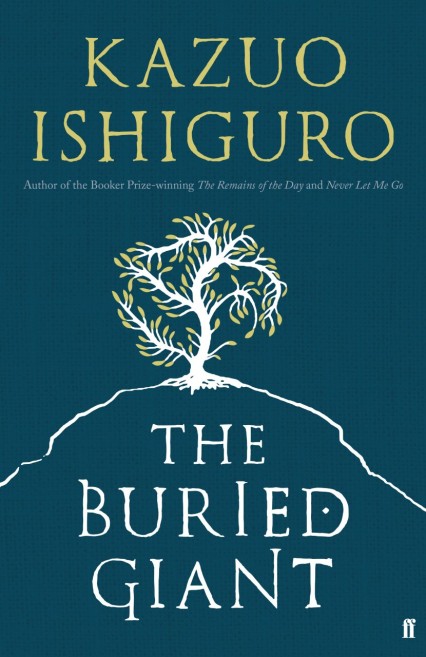352 pages. Faber, £20
Early Medieval Britain: the Romans have gone, their roads and villas long reclaimed by the landscape; King Arthur is dead, and across a bleak land of moors and valleys, through which ogres maraud and pixies ensnare, a strange mist has descended. A mist that robs people of their memory.

In a manner similar to his last novel Never Let Me Go (in which Ishiguro used cloning and the ethical questions/problems it produces – a staple motif of the science fiction genre – to explore themes of identity), The Buried Giant uses a mythical setting and elements of the fantasy genre – mythical creatures, knights, quests – to explore the theme of memory, in particular that of collective memory and its relationship with conflict and personal identity. How do we, as different tribes, as a species, remember atrocities? And how do these memories shape us as individuals?
The story starts out fairly simply: Axl and Beatrice, an elderly Briton couple, decide one day to visit their son’s village, a journey long delayed though for why they cannot recall.
Along the way they’re joined by Wistan, a mysterious Saxon warrior from the Fens, Edwin, a young Saxon boy rescued from ogres, and Sir Gawain, knight and nephew of the illustrious Arthur, who is seemingly an old and garrulous shadow of his former glory. Over the course of their journey, they discover the cause of the memory-devouring mist and layers are peeled back to reveal dark, fleeting glimpses of betrayal and crimes unpunished: the ‘buried giant’ of the title. A giant that, if it were to be unleashed, would tear the country apart.
Some difficult, even uncomfortable, questions are posed: should some grievances be buried and crimes unpunished for the sake of the greater good? Where should the cycle of reparation and vengeance stop? Should peace be ensured by any means necessary, even if those means are distinctly dubious? And is a peace bought with blood and deceit even worth preserving? The book doesn’t offer any definitive answers to these questions, nor does it even attempt to. And therein lies the story’s power: by not undermining the narrative’s moral complexity with trite attempts to tie everything up in a nice neat bow, the reader is left with plenty to think about.
The book’s pull is a quiet one; it won’t have you racing to turn the pages. Instead it gently tugs you deeper, slowly but as inexorably as the tide. This is largely due to Ishiguro’s trademark prose: simple and elegantly restrained yet still evocative, playing the fantasy elements straight and taking them in its stride.
During the pre-publicity for the book, Ishiguro stated that, originally, he’d tried setting the story in the aftermath of several real-world conflicts – including the Second World War and the breakup of Yugoslavia – but that none of these seemed right: it all became too rooted in the particular times and circumstances of these events. Only when he happened upon the idea of setting it in an imagined past did it begin to work. It has worked: by freeing it of any associations to modern conflicts the story gains a universality that gives it an almost fairytale-like resonance.
Long-time fans of Ishiguro’s work may be a little hesitant at first when confronted with such a stark change in setting and genre, but should soon find the familiar themes and rhythms of his storytelling, whilst those who are new will be provided with a truly powerful and affecting tale. A welcome return indeed.











